#zawiya
Text

The Roman Theatre of Sabratha, LIBYA
625 notes
·
View notes
Text
Israeli settlers drive out Palestinian shepherd from West Bank Town
This is land stealing
This is violent brutal occupation
This is terrorism
This is what terrorism looks like
This racism is systemic and endemic to the population and entire ideology for the existence of israel
The whole point of Israels existence is to steal land, to steal Palestine from its indigenous population. It is a nationalist political movement project with international commercial enterprise interests
This brutal violent occupation and underpinning ideology must be dismantled completely to ensure the safety of civilians, children, to ensure self determination and freedom of the Palestinian people
#Decolonise Palestine #Stop Israel's genocide
This is a genocide
This is a cultural genocide as well.
A Palestinian shepherd , what could be more of a biblical parallel?
#PALESTINE#Free Palestine#Decolonise Palestine#Human rights#Human rights violations#Israel is a terrorist state#Free the West Bank#West Bank#The West Bank#Gaza#Israel#Illegal occupation#Illegal Israeli expansion settlements#Illegal Israeli occupation#Illegal settlements#Illegal invasion#Biblical#Genocide#Cultural genocide#Innocent people#Innocent Palestinians#Apartheid#israel is an apartheid state#israeli apartheid#Ceasefire#Ceasefire now#free gaza#palestine will be free#Watermelon 🍉#🍉 🇵🇸
22 notes
·
View notes
Text
Pogroms and Violent Assaults on Palestinians in the West Bank
youtube
#settlement#settler colonialism#israeli settlers#settler terrorism#settler violence#free Palestine#free gaza#I stand with Palestine#Gaza#Palestine#Gazaunderattack#Palestinian Genocide#Gaza Genocide#end the occupation#Israel is an illegal occupier#Israel is committing genocide#Israel is committing war crimes#Israel is a terrorist state#Israel is a war criminal#Israel is an apartheid state#Israel is evil#Israeli war crimes#Israeli terrorism#IOF Terrorism#Israel kills babies#Israel kills children#Israel kills innocents#Israel is a murder state#Israeli Terrorists#Israeli war criminals
24 notes
·
View notes
Text

The zawiya Sidi Muhammad Ibn Bouzian in Bechar, Algeria where Qur’an is being taught.
147 notes
·
View notes
Text


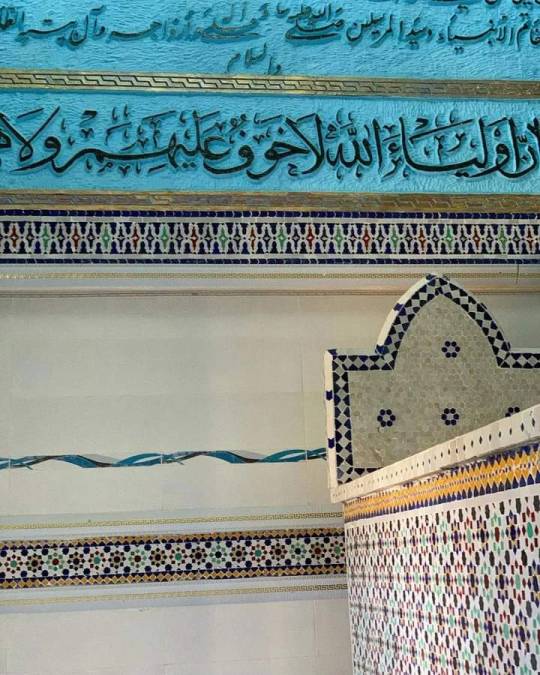



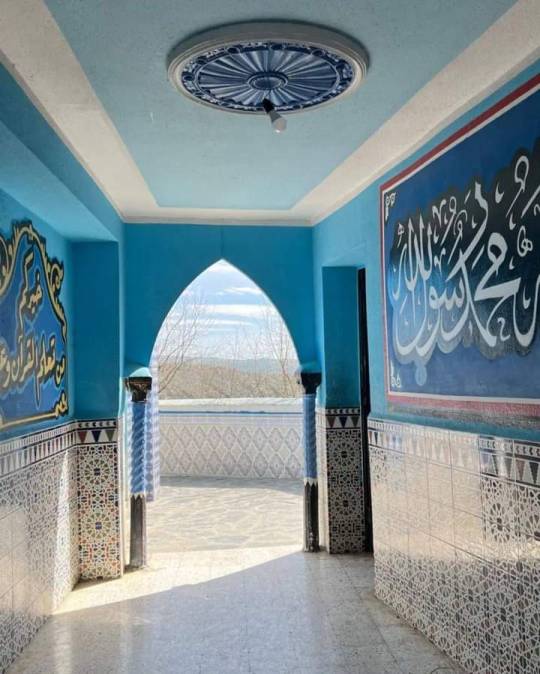

The Zawiya of Sidi Hassan Sharif in the state of Setif is one of the oldest religious monuments in Algeria....more than 800 years old
16 notes
·
View notes
Text


As Palestinians are slaughtered by the thousands in Gaza and violently attacked during night prayers in the al-Aqsa Mosque by Israel, the West Bank endures massacres that at times go unnoticed during this holy month. I have spent my Ramadan in conversation with a friend from Jenin.
Much has changed since I visited Aseel (not her real name) in August 2023. There are things I saw in Jenin that no longer exist. One of them is my friend’s smile and her spark.
Usually, they say Jenin is a small Gaza. During Ramadan, because the attacks generally happen at night, people are an easy target because they are on the streets late at night. In the past, it was rare for the IOF to enter during the day. Now, they attack during the day; their special forces enter, and after people discover them, their soldiers come within minutes.
Every 2-3 days, there is a new attack in Jenin. In our minds, there is a constant ringing that the IOF may come. We don’t know at what time we will be targeted or when they will enter. There is no stability in our lives.
Even when we plan for something, we hedge it with our inshallahs and laugh. There are a lot of ifs. If they don’t enter the camp. If there are no martyrs. If there is no strike.
On the second day of Ramadan, they attacked my neighborhood again. We thought it was a bombing because it started with an explosion, but the house was shaking. We were praying fajr, and everyone was screaming outside. The sound of the drone was in our ears. “No, these are missiles,” we realized.
There was panic in the streets. Women fainted. People had been walking back from praying at the mosque, and some were still in the street. Alhamdulillah, no one was hurt, we say.
The balcony to the room at my uncle’s house where we slept had fallen. It no longer had any glass, and a bullet entered my uncle’s bedroom and reached the kitchen. The drone hit the trees in front of our house. The missiles destroyed the ceiling, and the rockets reached my neighbor’s house on the first floor, exactly in front of our house.
Since October 7, Jenin has become a target. There is a clear escalation in the camp and the city. The IOF has used many different weapons to kill us here. They have even been aggressive toward the infrastructure, as though every inch of our city was resisting them.
They destroyed much of the camp, and there is no entrance now. The arch is gone, and there is no sign reminding us that Jenin refugee camp is a temporary place. There is no horse. Only the street is left. You have the photographs. You were lucky. They changed the shape of the camp, and everything has been destroyed.
--Aseel
The first time Aseel and I met in person was in Nablus at the Martyrs Roundabout. As we caught up, we ate a delicious concoction of ice cream, milk, nuts, and fresh fruit that was a perfect balm to the heat. She took me to some of her favorite places nestled within the old city of Nablus. A 150-year-old barber’s shop that felt like you had entered an antique store where plants reached the ceiling and where the barber was a massive fan of Angelina Jolie. A centuries-old house now called Tree House Cafe looked like a hobbit home from Lord of the Rings, where we hid away as she sipped her coffee and I drank a mint lemonade. We visited one of the oldest soap factories in the world with ingredients such as goat’s milk and olive oil, jasmine and pomegranates, even dates and Dead Sea mud.
We happened to chance upon a Sufi zawiya as we walked through a beautiful archway decorated with lanterns, light bulbs, and an assortment of potted plants, after which we saw a cobalt blue door on our left and an azul blue door with symmetrical red designs, and Quranic ayat like incantations on our right as doors upon doors greeted us.
The air was welcoming yet mingled with the memory of martyrs whose memorials took over the landscape, sometimes in the form of larger-than-life portraits surrounded by complex four-leafed magenta-white flowers; posters above a water spout next to a heart-shaped leaf; a melted motorcycle that, too, was targeted in the neighborhood that hosted the Lions’ Den. We stopped to pray at a masjid, quiet and carpeted.
After a bus ride from Nablus to Jenin, on our walk before entering Jenin camp, Aseel showed me the hospital right outside the camp. She pointed out the barricades created to keep the occupation forces from entering specific streets. This is the same hospital that the occupation forces blocked during the July 2023 attack, which now seems like a lifetime ago.
What caught my eyes again and again were the two Keys of Return on top of the entrance of Jenin Camp that symbolized so much for Palestinians.
“This is a temporary station,” Aseel read out loud to me. “That’s what it says. We are supposed to return to our homes.”
“Netanyahu said he is planning another big attack, so the resistance fighters are preparing because it can happen any day,” she had told me that evening as we shared Jenin-style knafeh, baked to perfection. Then she stopped, looked at the sky, and said humorously, “Ya Allah, hopefully not today!” And we both laughed because of its potential reality.
Dinner on the terrace at her uncle’s home was a delicious spread of hummus, laban, fries, cucumbers pickled by her aunt, and arayes — fried bread stuffed with meat. Then we moved the furniture to sleep on mattresses in a room that extended to the rooftop terrace with a breeze, overlooking Jenin Camp and the rest of Jenin City. We could hear gunshots in the distance. The drones were commonplace, and the heat did not relent. Temperatures soared, and the electricity was out when we woke up at 5 a.m. I heard her pray, and later, as we sipped on coffee and had wafters in the early morning at her home, my eyes went to a piece of tatreez, or embroidery, of a bird in flight framed on the wall. Her eyes followed mine and when I said I loved it.
“It used to be my grandfather’s,” she told me. “Of course it’s beautiful — the bird is free.”
Unexpectedly, Aseel’s mother gifted me a Sprite bottle full of olive oil beholding the sweet hues of its intact health, which I would later ship secretly from Bethlehem all the way to Boston. And then Aseel came to me with a gift, too: a necklace that spoke succinctly about the right to return and live on this earth. Mahmoud Darwish’s poetry was held together with intricate calligraphy carved in the shape of Palestine’s landscape, and I was completely overwhelmed.
“You are in Palestine, my dear,” she had smiled. “And you are now my family. This is your country, this is your second home, really.”
When I ask her about what brings her hope these days, Aseel tells me about her eight-year-old nephew.
He wanted to eat two meals. I told him that in Gaza they don’t have food. He was complaining about the food, and I told him, they don’t have water. And he heard me because he said, “today, we will only have one meal.”
I’m amazed at how mature he is. He even said, “We won’t make a special cake on Eid because of the Gazans.” For me, this is a lesson to be learned. He is only eight years old, but he knows.
We have lost a lot of people in Gaza, but here in the West Bank, we are succeeding because our new generation knows a lot. Ben Gurion would not be happy. He said of Palestinians, “the old will die and the young will forget.” No, the young ask even more questions. The new generation brings us hope. Hope is the new generation.
-- "Ramadan reflections from ‘little Gaza’" by Zehra Imam for Mondoweiss, 6 Apr 2024
6 notes
·
View notes
Text

April 2023: Mohammad Beltagy, 42, who is from Gaza and supports six children, sells kaak - date paste-filled cookies served traditionally in Eid - in the al-Zawiya market in the east of Gaza. [Abdelhakim Abu Riash/Al Jazeera]
23 notes
·
View notes
Text
At least 60 migrants have died after a rubber dinghy ran into trouble in the Mediterranean Sea, according to survivors.
The 25 survivors were picked up by the Ocean Viking, a vessel operated by the humanitarian group SOS Méditerranée.
They told their rescuers that they had set off from Zawiya on the Libyan coast several days before being rescued.
The engine of the dinghy broke down after three days, leaving the boat adrift without food or water.
The survivors said that the victims included women and at least one child. They are believed to have died from dehydration and hunger, not drowning.
SOS Méditerranée said the Ocean Viking team had spotted the dinghy, which set off last Friday, with binoculars on Wednesday and had staged a medical evacuation in co-operation with Italian coast guards.
It said the survivors were "in very weak health condition" and were all under medical care.
Two of them, who were unconscious and in critical condition, had been flown to Sicily by helicopter for further treatment, the group added.
The remaining 23 are still on board the Ocean Viking, along with more than 200 other migrants who were rescued from two other boats.
The vessel is heading for the port of Ancona, about four days away, but the team has requested a closer port of safety.
"The people who were on the boat in distress, lost at sea for almost a week, went out of water and food very quickly, according to the survivors," said an SOS Méditerranée spokeswoman on board the ship.
"People died along the way. I met a man who lost his wife and one-and-a-half-year-old baby. The baby died the first day, the mother the fourth day. They were from Senegal and had been in Libya for more than two years."
The International Organisation for Migration (IOM) said last week that 2023 was the deadliest year for migrants since records began a decade ago, with at least 8,565 people dying on migration routes worldwide.
The UN agency said the figure was 20% up on the year before.
Its report found that the Mediterranean crossing continued to be the most dangerous journey, with at least 3,129 deaths and disappearances during 2023 - the highest toll since 2017.
3 notes
·
View notes
Text

Beirut’s stony Melkite Greek Catholic cathedral of Saint Elias.
It was initially built towards the end of the 18th century and reconstructed in 1849.
Style: Byzantine, baroque, Islamic


The only remaining Mameluke building in Beirut, Zawiyat Ibn Arraq.
Once a complete private madrasa, only the zawiya (prayer corner) remains of it.
Today, someone seemed to have made it their own prayer corner and unrolled a prayer rug inside.
Date: 1517- used till Ottoman times
Beautiful to see what we treat as “monuments” being reused as such. Do we glorify what is historical only because we know it’s historical? Do we love these stones only because we know they’re hundreds of years old? What’s so intrinsically beautiful about what’s historical?
Can we even call them monuments? Is it history? Is it present?
3 notes
·
View notes
Text
Just leaving a few more articles here.
Erdogan’s stooges need to be reminded that they aren’t invincible.
Reblog the shit out of this.
#dougie rambles#political crap#news#Middle East#Asia#Iraq#syria#turkey#kurdistan#assyria#bethnahrin#HPG#PKK#sdf#Syrian democratic forces#north and east Syria#rojava#leftism#anti imperialism#anti fascism#idlib#fuck Erdogan#reblog this#reblog the shit out of this
5 notes
·
View notes
Text
ISLAM 101: SPIRITUALITY IN ISLAM: PART 95
Sufism observes all of the same ritual prayers and holidays as mainstream Islam. As such, the five daily prayers, the holy month of Ramadan, and other major holidays (such as the Feast of the Sacrifice, which commemorates the sacrifice of the Patriarch Abraham) are part of the Sufi sacred calendar and daily routine.
For practitioners of Sufism, however, another dimension of time is expressed in a vocabulary of states and stations that one attains over the course of one’s spiritual life. Each of these, a state or a station, has an additional temporal character, in that states are temporary, while stations are permanent.
A state, or hal in Arabic, is a part of a Sufi’s spiritual path. A state is a transient spiritual condition, which comes upon a person or leaves a person with equal degrees of fleetingness. A state may be positive or negative; it may be a temporary sense of closeness to God that causes joy in the believer, or a sudden sense of distance from God, which causes a moment of grief or sorrow. According to leading scholar of Sufism, Seyyed Hossein Nasr, the Sufi disciple has a duty to persist through these transient states, and continue to practice in spite of the negative states as well as the positive ones. These moments are intricately connected to the spiritual life of the Sufi, whose attentiveness to the state of his or her interior life makes the experience of them a frequent occurrence. Their frequency is as importance as their impermanence—the states are meant to help the Sufi on the path, they are not a place in which to get stuck or fixate.
On the other hand, a condition known as a station, or a maqam, is more permanent. Seyyed Hossein Nasr likens them to plateaus reached during an ascent up a mountain, stations along the way to the top. A station is a high level of spiritual attainment. Other terms for these stations of spiritual awareness are manazil, or “places of descent,” as in a place upon which something that is soaring temporarily alights, and mawaqif, standing points at which one pauses and stops. Stations may be linked to spiritual virtues, such as humility, charity, sincerity, or truthfulness.
A zawiya (Arabic) is a Sufi lodge, a building also known as a khanqah among Persian-speaking Sufis, and a tekke in the Turkish-speaking world. Sufism began to be formalized into particular tariqas or orders in the Middle Ages. Sometimes using funds from private patrons, or through the donations of their disciples, Sufi teachers began to build lodges in which they, as master of the order, and their disciples and students could live. Often a lodge would grow up around the tomb of a Sufi master. A shrine erected over the tomb of a venerated person is called a dargah.
Occasionally, temporary lodging or hospices became attached to lodges to accommodate travelers. Lodges soon became institutions of learning and around them other colleges or madrasas could grow, in which students could acquire training in Islamic law, theology, philosophy, and natural sciences in addition to their spiritual training. Thus the Sufi lodge is a place for spiritual retreat and development. Those lodges whose pedagogical function was linked to a defensive function in military enclosures called ribat were also a feature of medieval Sufism.
While it is not known when the first Sufi lodge was built, another kind of Sufi residence, an fortified building or fortress called a ribat was in use as a retreat for Sufi brotherhoods in the early Islamic period, probably as early as the 9th century C.E.
#allah#god#islam#muslim#quran#revert#convert#convert islam#revert islam#revertr help#revert help team#help#islamhelp#converthelp#pray#dua#hijab#religion#mohammad#new muslim#new revert#new convert#how to convert to islam#convert to islam#welcome to islam
4 notes
·
View notes
Text
Africanews English: At least 50 migrants dead on a boat coming from Libya
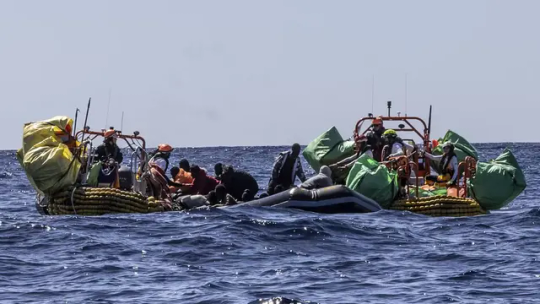
Migrants on an inflatable dinghy partially deflated by rescue personnel from the SOS -
Survivors rescued from a deflating rubber dinghy in the central Mediterranean say about 50 people who left Libya with them a week ago died during the journey, humanitarian relief group SOS said Thursday Mediterranean.

The ship Ocean Viking spotted the dinghy with 25 people on board on Wednesday. Two of them were unconscious and were evacuated by the Italian army for treatment. The other 23 people are in serious condition, exhausted, dehydrated and burned by the fuel on board the boat.
Francesco Creazzo, spokesperson for SOS Méditerranée, said the survivors were all men, 12 of them minors and two not yet teenagers. They are native to Senegal, Mali and the Gambia.
Mr Creazzo said the survivors were traumatized and unable to give a full account of what happened during the journey. Humanitarian organizations often rely on survivors' accounts to establish the number of deaths and missing at sea presumed deceased.

The United Nations' International Organization for Migration (IOM) says 227 people have died along the perilous central Mediterranean route this year through March 11, not counting new people reported missing and presumed dead.
This figure is in addition to the 279 deaths that have occurred in the Mediterranean since January 1. A total of 19,562 people arrived in Italy via this route during this period.
Survivors said the boat left Zawiya, Libya, with 75 people on board, including women and at least one toddler. The engine broke shortly after departure, and they found themselves adrift.
#Migrants on an inflatable dinghy partially deflated by rescue personnel from the SOS -#mediterranean#refugees#migrants#They are native to Senegal#Mali and the Gambia.
1 note
·
View note
Text
I migranti salvati dalla Ocean Viking: "60 morti durante il viaggio, anche donne e un bambino"
AGI – Nuova strage nel Mediterraneo. I 25 migranti soccorsi ieri al largo della Libia da Ocean Viking di Sos Mediterranee hanno riferito che almeno 60 persone sono morte, tra cui donne e almeno un bambino: “Sono partiti da Zawiya – riporta la ong – 7 giorni prima di essere salvati. Il motore si è rotto dopo 3 giorni, lasciando la barca alla deriva senza acqua e cibo. I sopravvissuti dicono che…
View On WordPress
0 notes
Text
60 migrants die in Mediterranean Sea boat crash
At least 60 migrants have died after a rubber boat capsized in the Mediterranean Sea, survivors say.
Ocean Viking, a vessel operated by humanitarian group SOS Méditerranée, picked up the 25 survivors. They told rescuers they had travelled from Zawiya on the Libyan coast seven days before being rescued. After three days, the boat’s engine broke down and they were left without food or water. Survivors said the victims included women and at least one child.
SOS Méditerranée said the Ocean Viking crew spotted the dinghy through binoculars on Wednesday and organised a medical evacuation in cooperation with the Italian coastguard.
The crew said the survivors were in “very poor health” and all were under medical observation.
Two who were unconscious and in a critical condition were flown to Sicily by helicopter for further treatment, the team added.
Last week, the International Organisation for Migration (IOM) said 2023 was the deadliest year for migrants since record-keeping began a decade ago, with at least 8,565 people killed on migration routes around the world.
Read more HERE

#world news#world politics#news#europe#european news#mediterranean#mediterreansea#migrants#migrant crisis#migration#immigrants#immigration#illegal immigration#illegal occupation#illegal settlements#illegal aliens#illegal immigrants#ocean viking
0 notes
Text
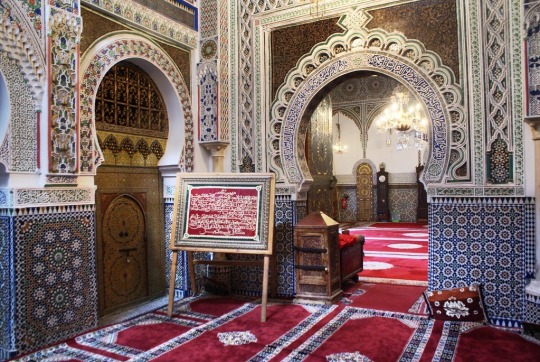

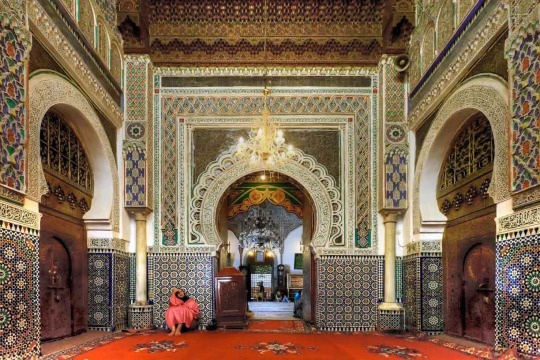
The Zawiya of Moulay Idriss II (رحمه الله), the sharif who ruled over Morocco from 807 to 828 and founded the city of Fes. He is the son of Idris I, who was the great-grandchild of Hasan (رضي الله عنه), the grandson of the holy Prophet ﷺ.
6 notes
·
View notes
Text
Help😭




can y'all tell me if this is a crystal and what can I do with it and what can it helps me with (I found it in a place called zawiya زاوية it's bacically a place where a dead family is buried ,ppl used to pray to one of them or smth)
0 notes